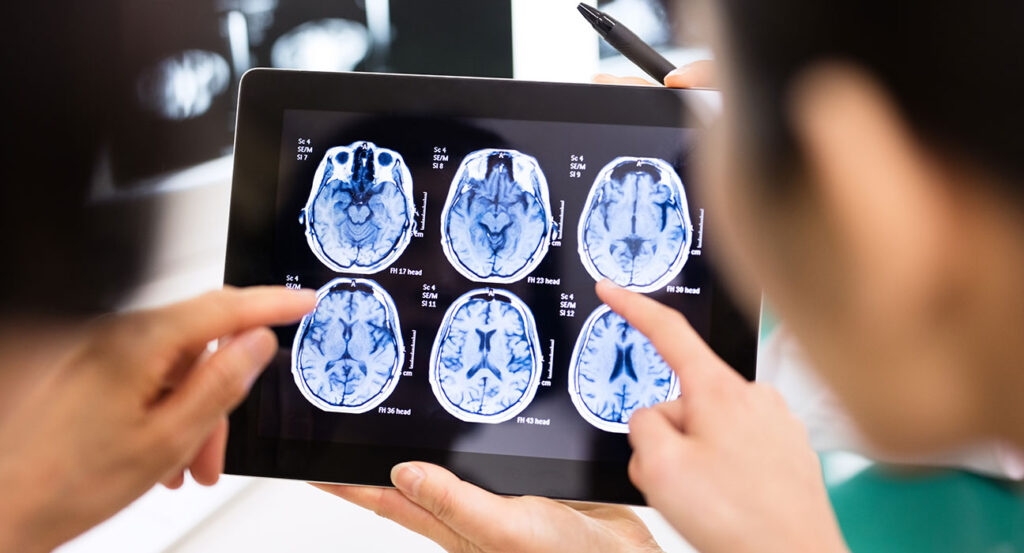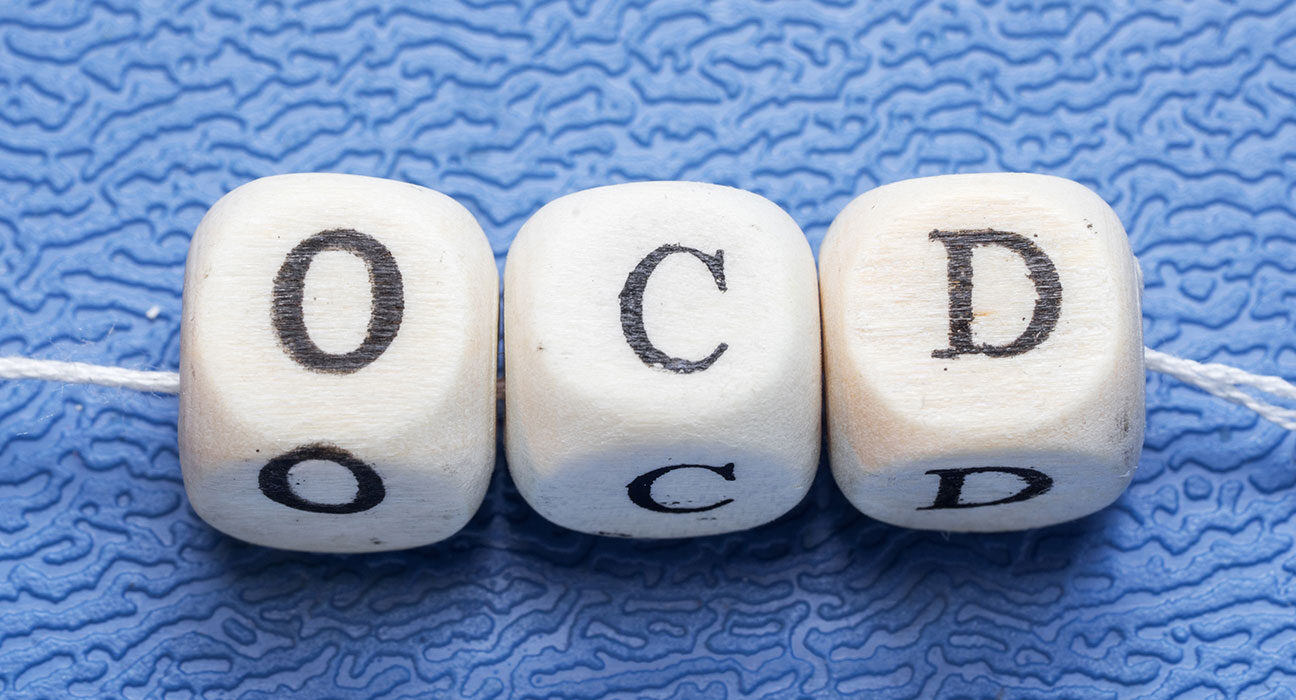Obsessive compulsive disorder (OCD) is a prevalent, incapacitating mental illness marked by intrusive, recurring thoughts and ritualistic, repetitive activities. Deep brain stimulation (DBS) is believed to reduce the symptoms of OCD by addressing underlying disruptions in the cortico-striato-thalamo-cortical (CSTC) circuitry.
Movement disorders like essential tremor, Parkinson’s disease, and dystonia, as well as psychiatric illnesses like obsessive-compulsive disorder, can all be effectively treated with deep brain stimulation.
How Does DBS Surgery Work For OCD Treatment?
With the aid of brain scans, doctors can identify the area of your brain that is producing your problems. In that region, they implant two electrodes. Doctors also insert a neurostimulator, a tiny gadget that functions much like a pacemaker and sends out moderate electrical signals. Your collarbone is where they implant the gadget. The electrodes are next attached, transferring the electrical current to the neurostimulator. Doctors can treat your OCD symptoms by using this technique to send electrical signals to your brain.
When patients with OCD are critically ill or other treatments have failed, doctors employ DBS. Many of these patients experience success with it. You will probably get relief right away if you obtain DBS. The results last a long time. Patients with DBS typically need to take fewer medications, which lessens their side effects.
What is Deep Brain Stimulation?
- Since the middle of the 1980s, DBS has been used to treat Parkinson’s disease and other movement disorder symptoms.
- Targeted brain regions are covered with electrodes during DBS. After the electrodes are in position, cables connecting them to pulse generators under the skin are inserted (usually just below the collarbone).
- The pulse generator, often referred to as an “implantable neurostimulator,” is powered by a battery and has a microprocessor that regulates the stimulation. To regulate the pulse generator through the skin, a doctor utilizes a handheld wand and a minicomputer.
- These pulse generators resemble pacemakers in their function. The electrodes in DBS are located in the brain rather than the heart, which is the most notable difference.
What is DBS Surgery?

Deep brain stimulation (DBS) is a neurosurgical operation that treats movement problems linked to Parkinson’s disease (PD), essential tremor, dystonia, and other neurological illnesses using implanted electrodes and electrical stimulation. In cases where drugs are no longer working as well or if their adverse effects are interfering with a patient’s everyday activities, doctors may turn to DBS for movement disorders or neuropsychiatric diseases.
Disorganized electrical signals in the parts of the brain that control movement is what lead to the movement-related symptoms of Parkinson’s disease and other neurological diseases. If DBS is effective, it can stop the erratic signals that are the source of tremors and other movement-related disorders.
Neurosurgeons implant one or more wires, known as “leads,” into the brain following a battery of tests that identify the ideal site. The leads are attached to a tiny neurostimulator (electric generator) implanted under the patient’s collarbone, much like a heart pacemaker, by an insulated wire extension. The leads allow electrical current from the neurostimulator to continuously pulse into the brain.
The neurostimulator is set to transmit an electrical signal by the doctor a few weeks after it is implanted. To make sure the current is appropriately adjusted and producing good outcomes, this programming process may require multiple visits over a period of weeks or months. The clinician strives to get the best possible symptom control while minimizing negative effects when modifying the device.
Who is the Right DBS Patient with OCD?
Patients who fit the following descriptions may be given serious consideration for deep brain stimulation:
- Possess an OCD diagnosis that has been present for at least five years in documentation
- Has OCD been classified as a chronic or serious illness?
- Have a YBOCS rating of at least 30
- Have coexisting anxiety and sadness
- Have not improved after taking three or more SSRIs (selective serotonin reuptake inhibitors) with enhancement
- Not as their major subclassification hoarding
- Possess some experience with cognitive behavioral therapy (CBT)
- Possess neither a major psychiatric condition (such as comorbid personality disorder) nor a substance use disorder in addition to their OCD.
- Satisfy the requirements for deep brain stimulation system implantation
- Are at least 18 years old.
- Have not already undergone surgery to remove the part of the brain that will be stimulated
- The patient should not be pregnant
- Possess no further neurological conditions, including dementia
- Not using blood thinners or having a bleeding condition
When implanting lead in patients who have a higher risk of cerebral bleeding, use considerable caution. The risk of bleeding in a patient may be increased by underlying conditions, such as a history of brain damage or medications (anticoagulants) that have been administered.
The risks of initial surgery may rise in the presence of clinical problems such as diabetes mellitus, cardiovascular illness, renal or hepatic failure, neurological disorders, stroke, or neurological disorders, according to doctors.
Long-term post-surgical treatment of patients is advised in order to help ensure that they receive the greatest benefits from the neurostimulation device.
To obtain maximum symptom improvement with the fewest adverse effects, stimulation parameters should be changed. High parameter values could be a sign of an issue with the system or an insufficient placement of the lead. Higher stimulation settings, which may lead to potential excessive charge density, should be explained to patients. More details about excessive charge density can be found in the OCD Information for Prescribers Addendum.
Since DBS for treatment-resistant OCD requires a highly specialized operation, it is advised that care be provided at facilities with knowledge of this intervention. Selection of patients carefully is crucial. Patients who qualify for DBS typically respond poorly or not at all to all currently accessible OCD medications and behavioral therapies. Additionally, it is crucial that the procedure be carried out by a neurosurgeon with experience in “Stereotactic and Functional Neurosurgery.” Of course, once the electrodes are in place, treatment can begin. The choice of the best stimulation parameters and the duration of the treatment is essential. In the weeks, months, and years following surgery, it is essential that a patient receives direct care from a psychiatrist with knowledge of DBS. DBS now seems to require perpetual continuation in order to continue providing benefits. One of the most intriguing clinical findings following lesion operations (capsulotomy or cingulotomy) or DBS is that behavior therapy may be successful for a patient who was not responding to it prior to surgery.
The anatomical location and conceptualization of deep brain stimulation targets for OCD have changed dramatically over time. It is now evident that improving results are achieved by targeting posteriorly and ventrally within the capsule. A therapeutic impact is probably obtained from the direct stimulation of white matter pathways that results in the modification of large cortical and subcortical networks, therefore the overall trajectory of leads is unquestionably crucial. Despite tremendous progress, questions remain regarding the underlying changes in the CSTC circuitry that underlie better clinical efficacy, the exact location of the ideal stimulation site, and trial design strategies. Though exciting new research directions have emerged as a result of enhanced anatomical and functional models of the affected regions and the application of technology. Due to the severity of this condition, researchers will spend the ensuing years refining DBS for OCD.
References:
- https://www.frontiersin.org/articles/10.3389/fnins.2018.00998/full
- https://www.mayoclinic.org/tests-procedures/deep-brain-stimulation/about/pac-20384562
- https://www.mountsinai.org/care/psychiatry/services/ocd-tics/dbs#:~:text=Doctors%20use%20DBS%20for%20OCD,The%20effects%20are%20long%2Dterm.
- https://iocdf.org/expert-opinions/expert-opinion-dbs/
- https://www.hopkinsmedicine.org/health/treatment-tests-and-therapies/deep-brain-stimulation#:~:text=Deep%20brain%20stimulation%20(DBS)%20is,dystonia%20and%20other%20neurological%20conditions.
- https://www.medtronic.com/us-en/healthcare-professionals/therapies-procedures/neurological/deep-brain-stimulation/indications/obsessive-compulsive-disorder.html
- https://iocdf.org/about-ocd/ocd-treatment/dbs/


Leave feedback about this